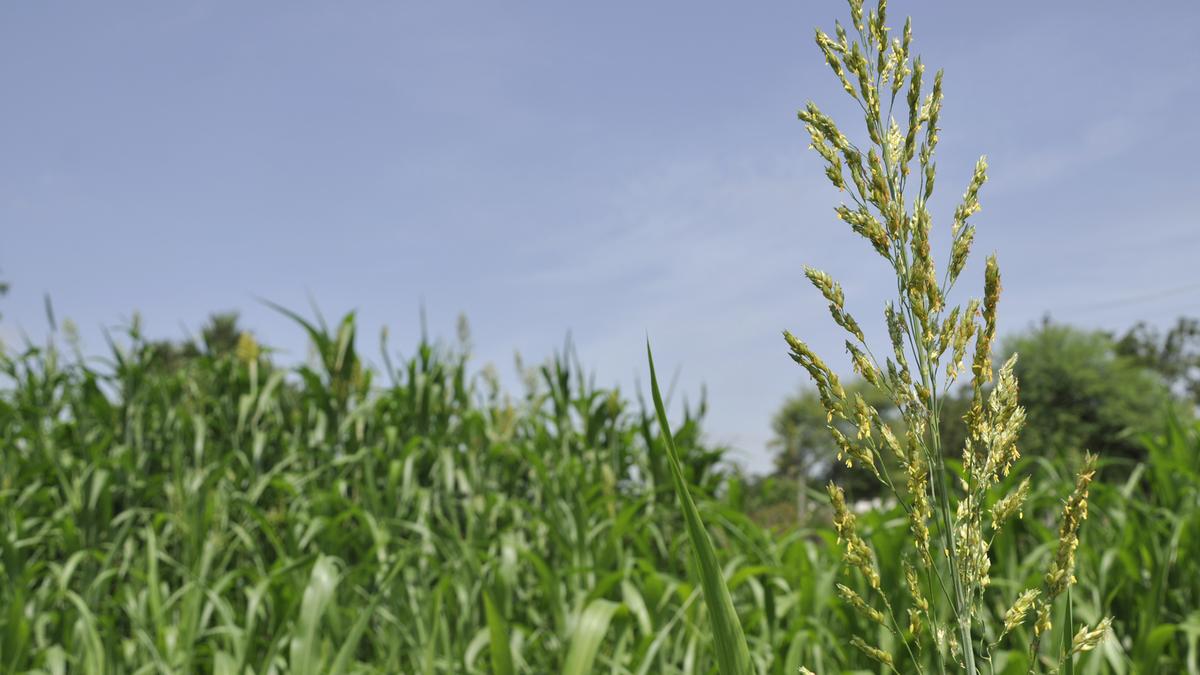Rice is the staple food for over half of the world’s population. Before a rice grain can be made edible, the outermost layer of husk covering it has to be removed. Often the next layer, called the bran, is also removed to whiten the rice.
Traditionally, these layers have been removed by pounding the paddy rice with pestles in a mortar, then winnowing the grains from the chaff. Today, mechanical rollers abrade the layers in a process called milling, and some of the rice grains break as a result. The breakage increases if the grains have a trait called chalkiness. Since chalkiness reduces the recovery of commercially acceptable grain, it downgrades quality.
Rice is said to be chalky if after milling a large fraction of grains have extensive parts that are opaque rather than translucent. Chalky rice is also brittle. The difference between opaque and translucent grains, however, disappears during cooking, and chalkiness has no effect on the taste or aroma.
Chalkiness is measured by the chalky grain rate, which is the proportion of chalky grains among all rice grains, and the degree of chalkiness, which reflects the extent of chalkiness in them.
Chalkiness in rice varieties is influenced by many genes and by environmental factors like high temperature and nutrient availability. Thus scientists have long struggled to find ways to reduce chalkiness. Recently, a breakthrough came in the work of a team from the Agricultural College of Yangzhou University, in Yangzhou in China. The researchers identified a gene they named Chalk9, which they found controls the chalkiness in many rice varieties.
Their findings were reported in July in the journal Nature Communications. Identifying the gene gives scientists a handle to reduce chalkiness across rice varieties.
Tagging a protein
The researchers sequenced the genome of 175 rice varieties that between them showed a wide variation in their chalkiness trait, as measured by chalky grain rate and the degree of chalkiness. They found more than two million differences across the genome sequences. Then they searched for association between alternative versions of individual DNA sequence variations and the severity of the variety’s chalkiness.
This way, the team identified a small stretch of DNA on chromosome 9 whose presence or absence correlated significantly with whether the variety showed low or high chalkiness. Low-chalkiness varieties contained the segment and showed higher expression of Chalk9 in endosperms compared to high-chalkiness varieties. The endosperm is the part of paddy grain that makes up the bulk of the milled rice.
The DNA segment that the team found contained sites that are recognised and bound by proteins called transcription factors. One of them, called OsB3, was highly expressed in the endosperm. When OsB3 bound to the DNA, it activated the expression of the Chalk9 gene. The OsB3 protein failed to trigger this gene expression in rice varieties from which this DNA segment was absent.
Based on the Chalk9 gene’s DNA sequence, the researchers predicted that it encoded a protein belonging to a class of enzymes called E3 ubiquitin ligases. E3 ubiquitin ligases, along with three other proteins named ubiquitin, ubiquitin-activating enzyme (E1), and ubiquitin-conjugating enzyme (E2), attached ubiquitin to selected target proteins. This tagging is called protein ubiquitination — and it marked proteins for degradation.
Making, storing starch
The researchers wanted to find out what makes some rice grains chalky. First, they found that the Chalk9 protein can attach little ‘tags’ (known as ubiquitin) to another protein called OsEBP89. Tagging OsEBP89 caused it to become destroyed by the cell.
This mattered because OsEBP89 was found to be like a power switch. It turned on two kinds of important genes. One, called Wx, helped the rice grain make amylose, a large, starchy molecule built from sugar. The other kind, SSP genes, made proteins to store starch in the rice grain.
When OsEBP89 was missing (e.g. because it had been deleted), those genes didn’t turn on much and the rice grains ended up being less chalky. But if there was too much OsEBP89, these genes are switched on too much and the rice became even chalkier.
To test this system, the scientists put the OsEBP89 protein in a lab mix with all the tagging machinery: E1, E2, Chalk9, and ubiquitin. The OsEBP89 got tagged and destroyed. But if the Chalk9 gene was modified just a little, the OsEBP89 protein escaped tagging and stayed around.
Why didn’t the researchers find OsEBP89 in their original search? It turned out that almost every type of rice — i.e. the 4,726 cultivated varieties — had the same version of the gene that encoded for OsEBP89. Since it didn’t vary from variety to variety, the team didn’t spot in early screens for causes of chalkiness. It’s how Chalk9 acted on OsEBP89 that made the real difference.
A propensity to break
The researchers surveyed 127 rice varieties archived from the 1950s to the 2000s and found that the frequency of the Chalk9 gene’s low chalkiness version, Chalk9-L, was relatively low prior to 1990, but increased significantly thereafter.
Before 1990, most rice varieties carried Chalk9-H, the high chalkiness version. Clearly, rice breeding programs had unwittingly selected for Chalk9-L to reduce chalkiness and thus improve grain quality. Now, breeders can achieve this goal in a single step by simply introducing Chalk9-L into rice varieties from which it is absent.
OsEBP89 levels remain high in varieties that carry the Chalk9-H version, which increases starch synthesis, and thus forms a chalky endosperm. In contrast, the Chalk9-L version enhances Chalk9 expression, promoting OsEBP89 degradation.
The researchers wrote that “by promoting the degradation of OsEBP89, Chalk9 functions as a ‘brake’ to limit starch accumulation and storage”. Reducing OsEBP89 levels switched off Wx and SSP expression, shutting down storage product synthesis, and thus leading to translucent grains and better rice quality.
D.P. Kasbekar is a retired scientist.
Published – August 17, 2025 06:30 am IST
